Types of Doors for Interior and Exterior

As door experts, we’re here to guide you in selecting the perfect doors for your space. Whether you’re looking for an exterior door that improves your home’s curb appeal and safety or an interior door that optimizes your space and flow, our expertise will help you navigate the options with confidence.
In this article, we will break down various door types, weigh their advantages and disadvantages, and highlight key considerations to ensure you make the best choice for your home or office.
Table of Contents
- Types of Doors
- Exterior Doors
- Interior Doors
- Factors to Consider When Choosing a Door
- Comparison Charts
- Conclusion
Exterior Doors
Panel Doors
Panel doors offer strong and sturdy construction, ensuring durability and enhanced security. They also provide good insulation, especially when made from solid wood or insulated fiberglass. However, they may require periodic maintenance, particularly if made from natural wood, which can warp or crack over time.
Best For:
- Homeowners looking for a stylish, classic, and durable door option
- Traditional and modern homes requiring a high-end look
- Interior and exterior use, depending on material choice
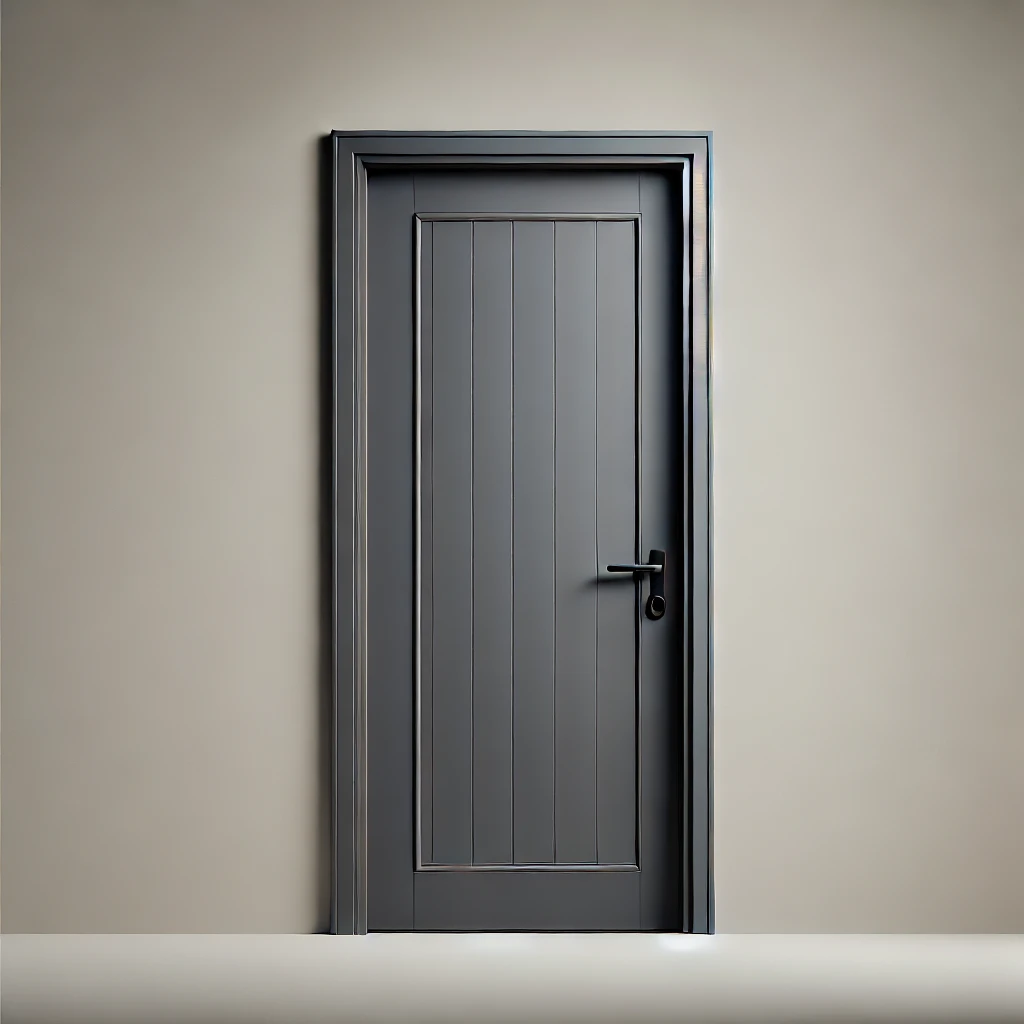
| Pros | Cons |
|---|---|
| Classic and versatile design | Can be expensive depending on material |
| Available in various materials | Requires maintenance, especially wood |
| Provides good insulation and security | Heavy and may need reinforced hinges |
Flush Doors
Flush doors have a sleek, flat surface, making them an excellent choice for modern and minimalist home designs. They are typically made from plywood or MDF with a hollow or solid core. These doors are simple, easy to install, and require minimal maintenance. However, they may not provide the same decorative appeal as panel doors and can have limited durability in hollow-core variants.
Best For:
- Modern and minimalist homes
- Budget-conscious homeowners looking for an affordable yet functional door
- Interior applications where aesthetics and simplicity are prioritized
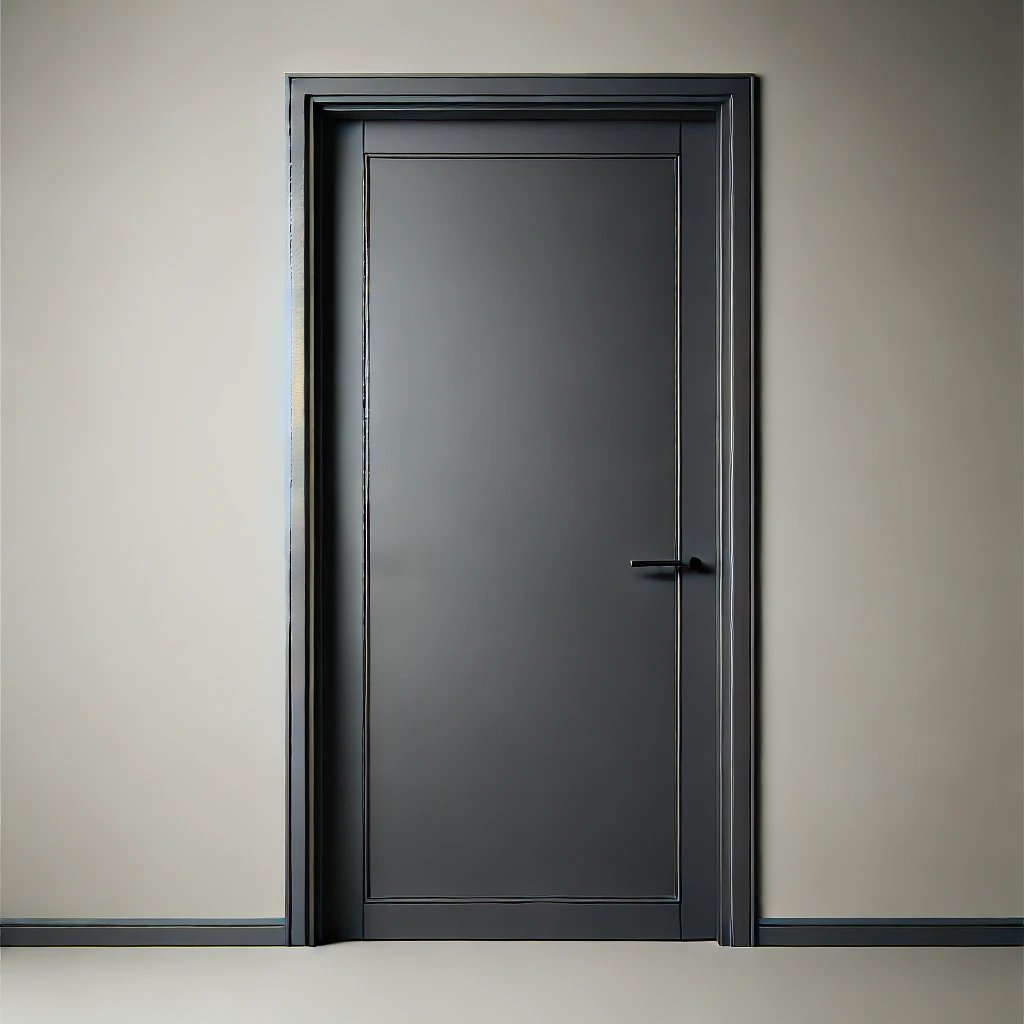
| Pros | Cons |
|---|---|
| Modern and simple aesthetic | Less decorative than panel doors |
| Affordable and lightweight | Hollow-core versions may lack durability |
| Easy to maintain and clean | Limited soundproofing |
Dutch (Stable) Doors
Dutch doors, also known as stable doors, are uniquely designed with a horizontal split, allowing the top and bottom sections to operate independently. This feature is excellent for improving ventilation while maintaining security—making them a popular choice for kitchens, nurseries, and farmhouses. However, they require additional sealing to prevent drafts and may offer less security than full doors.
Best For:
- Farmhouses, country-style, and rustic-themed homes
- Kitchens and nurseries where ventilation and security are both needed
- Homeowners looking for a decorative yet functional alternative to traditional doors
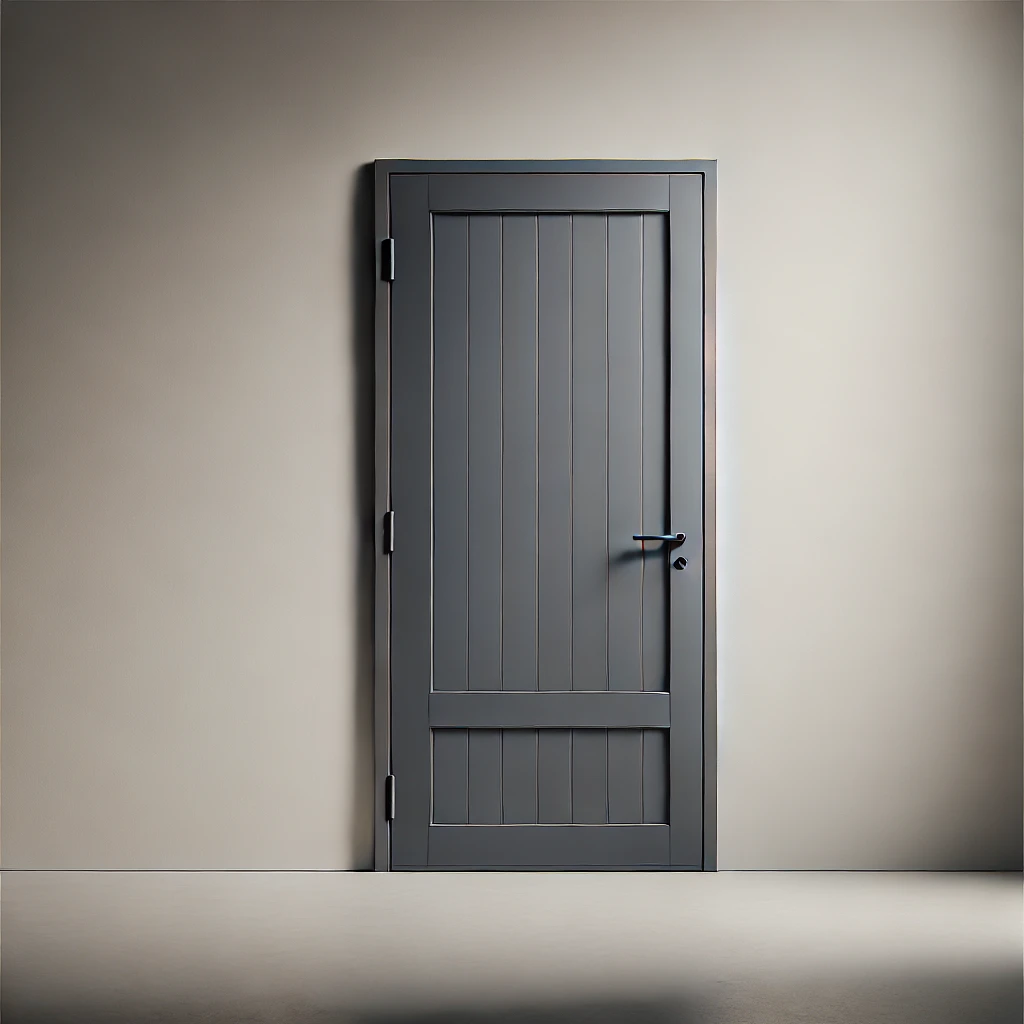
| Pros | Cons |
|---|---|
| Allows for controlled ventilation | More expensive than standard doors |
| Adds a unique and charming look | Requires extra weatherproofing |
| Good for pet and child safety | Limited security compared to full doors |
French Doors
French doors feature large glass panels framed in wood, fiberglass, or metal, creating an elegant, open feel. These doors allow abundant natural light to enter a space, making them ideal for connecting indoor and outdoor areas. Often used as patio doors or garden entryways, French doors enhance home aesthetics with their timeless appeal.
Best For:
- Homeowners looking for stylish and light-filled door options
- Living rooms, patios, and garden entrances
- Spaces requiring a classic yet functional design
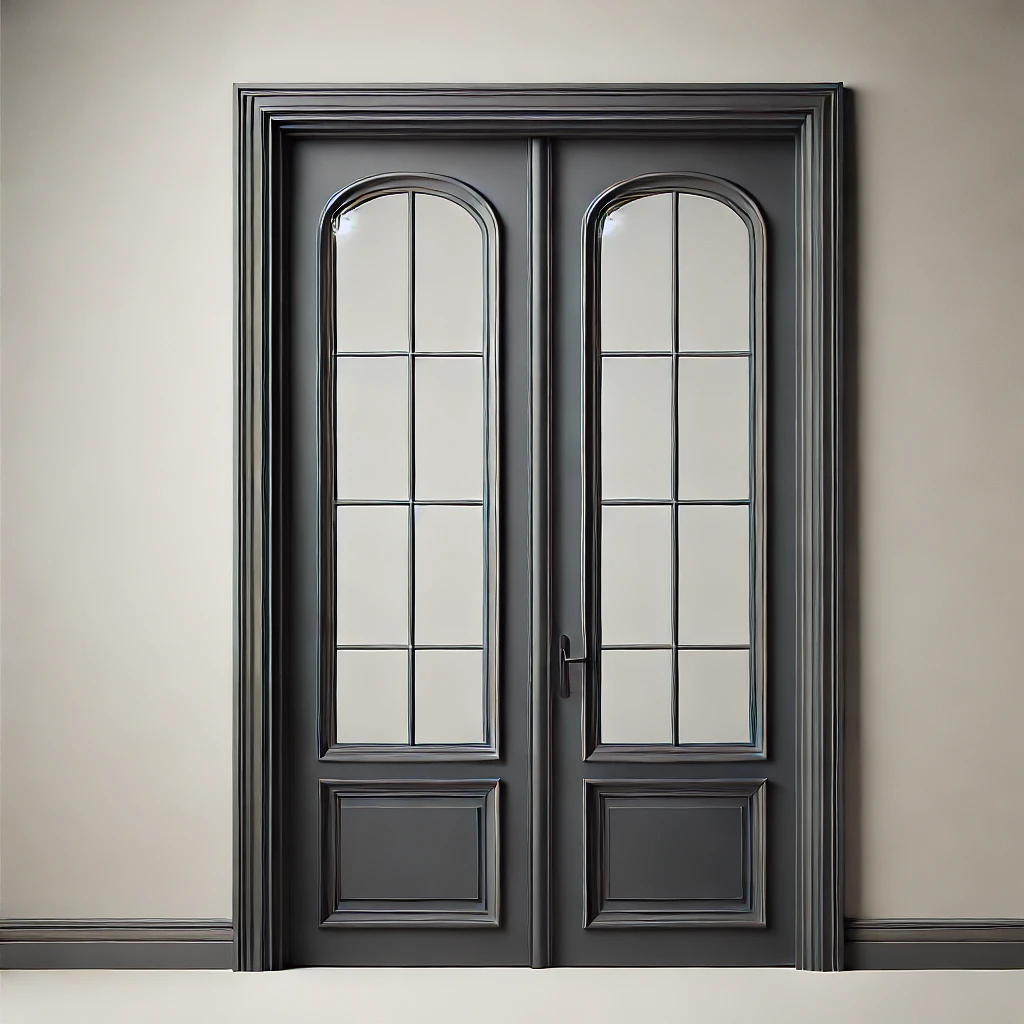
| Pros | Cons |
|---|---|
| Enhances natural light and aesthetics | Requires regular glass cleaning |
| Available in various designs and materials | Less secure than solid doors |
| Creates a spacious, open feel | May require additional insulation |
Sliding Patio Doors
Sliding patio doors operate on a smooth track system, making them a space-saving and convenient choice for accessing outdoor areas. Their large glass panels provide an unobstructed view of patios, balconies, or gardens, enhancing indoor-outdoor connectivity. However, their wide glass surface may pose security concerns and require additional locking mechanisms.
Best For:
- Homes with patios, balconies, or garden access
- Modern and contemporary home designs
- Small spaces where a swinging door is impractical
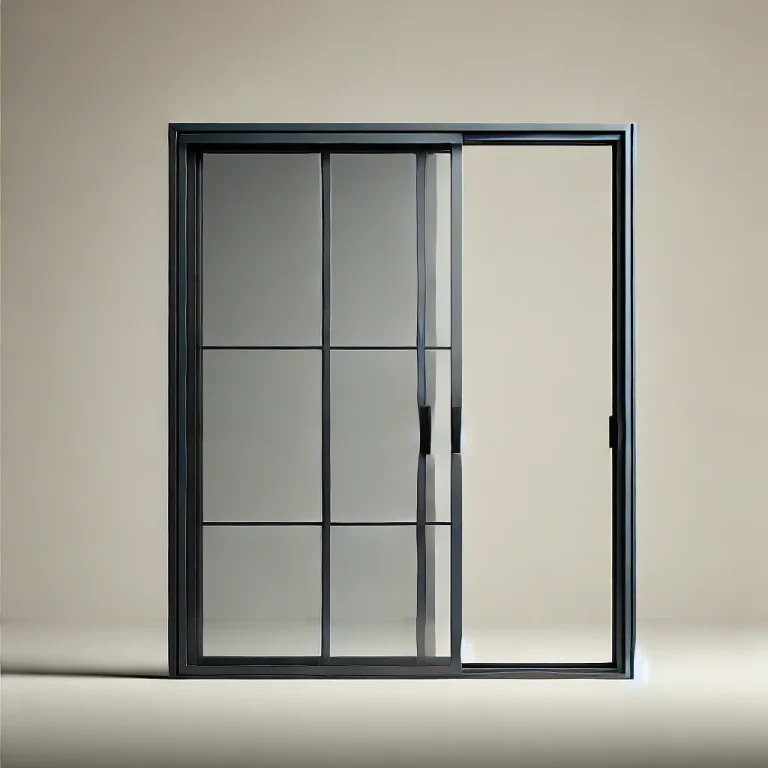
| Pros | Cons |
|---|---|
| Space-saving design | Can be difficult to secure |
| Allows for panoramic views | Requires regular track maintenance |
| Easy to operate | Limited width compared to swinging doors |
Bi-fold Doors
Bi-fold doors consist of multiple panels that fold along a track, creating a seamless transition between indoor and outdoor spaces. They are commonly used in modern homes and commercial spaces to create a large, uninterrupted opening. These doors provide excellent natural light and ventilation while offering flexibility in partially or fully opening the doorway.
Best For:
- Open-plan living spaces and modern homes
- Large patio, deck, or garden entrances
- Homeowners looking for a stylish, expansive door solution
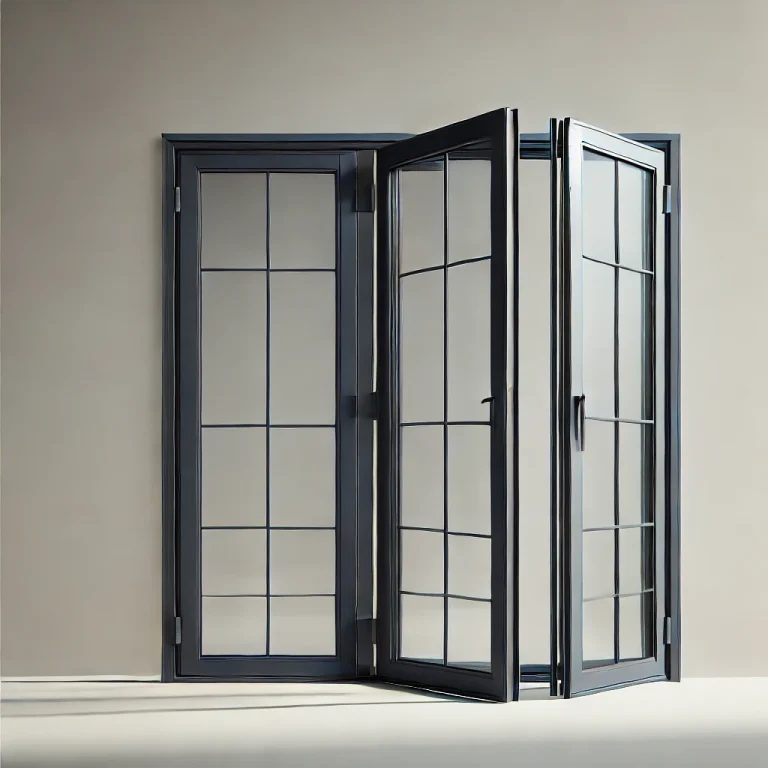
| Pros | Cons |
|---|---|
| Maximizes opening width | Can be expensive |
| Ideal for indoor-outdoor transitions | Requires regular maintenance of tracks and hinges |
| Stylish and contemporary | Needs space for panels to fold |
Pivot Doors
Pivot doors are a bold architectural choice, rotating around a central hinge rather than swinging on side hinges. This unique operation allows for oversized, statement-making entrances that exude modern elegance. Pivot doors offer smooth, effortless motion and are often used in luxury homes or commercial spaces.
Best For:
- Luxury homes, hotels, and commercial buildings
- Homeowners seeking a bold and unique entrance design
- Large entryways requiring a modern, upscale aesthetic
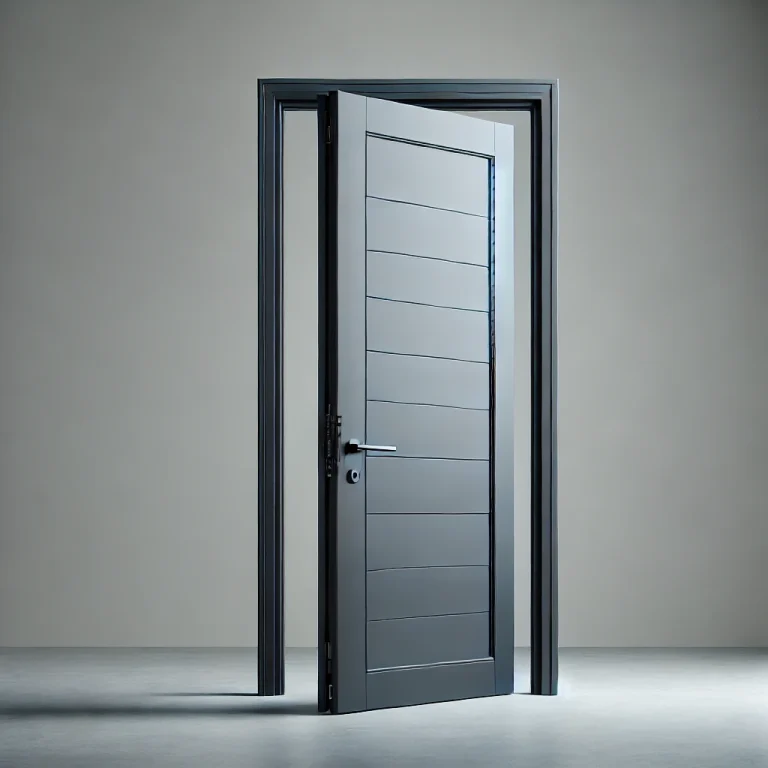
| Pros | Cons |
|---|---|
| Creates a dramatic, stylish entryway | Requires precise installation |
| Smooth and effortless operation | Can be expensive due to custom hardware |
| Available in large sizes | Not as energy-efficient as other doors |
Metal Doors
Metal doors, typically crafted from steel or aluminum, are designed for superior security and durability. They are commonly used in commercial and residential applications that require extra protection. These doors are highly resistant to forced entry, making them an excellent choice for security-conscious people. Many metal doors come with fire-resistant properties enhancing safety.
Best For:
- High-security areas, including commercial buildings and residential entryways
- Fire-prone zones requiring fire-rated door options
- Homeowners looking for low-maintenance, impact-resistant doors
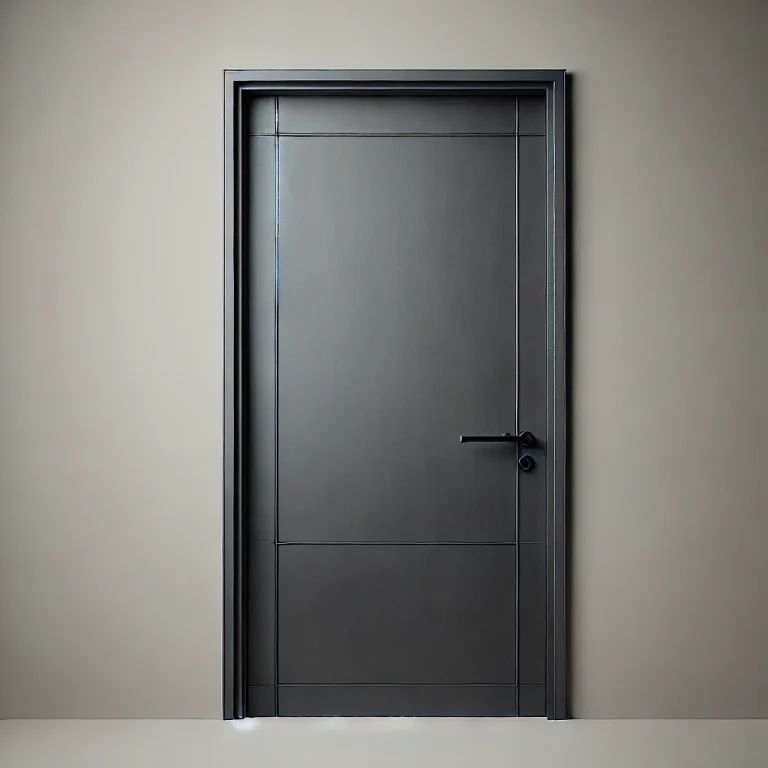
| Pros | Cons |
|---|---|
| Superior security and strength | Can be prone to rust without proper coating |
| Fire-resistant options available | Heavy and difficult to install |
| Long-lasting and durable | May dent upon heavy impact |
Fiberglass Doors
Fiberglass doors are a popular alternative to wood and metal doors, offering a perfect balance of durability, energy efficiency, and aesthetics. These doors are designed to resist warping, cracking, and rotting, making them ideal for humid or harsh weather conditions. They can mimic the look of natural wood without the high maintenance, making them an attractive option for homeowners.
Best For:
- Homeowners seeking a durable, low-maintenance alternative to wood doors
- Regions with extreme weather conditions, including high humidity or heavy rain
- Energy-conscious individuals looking to improve insulation
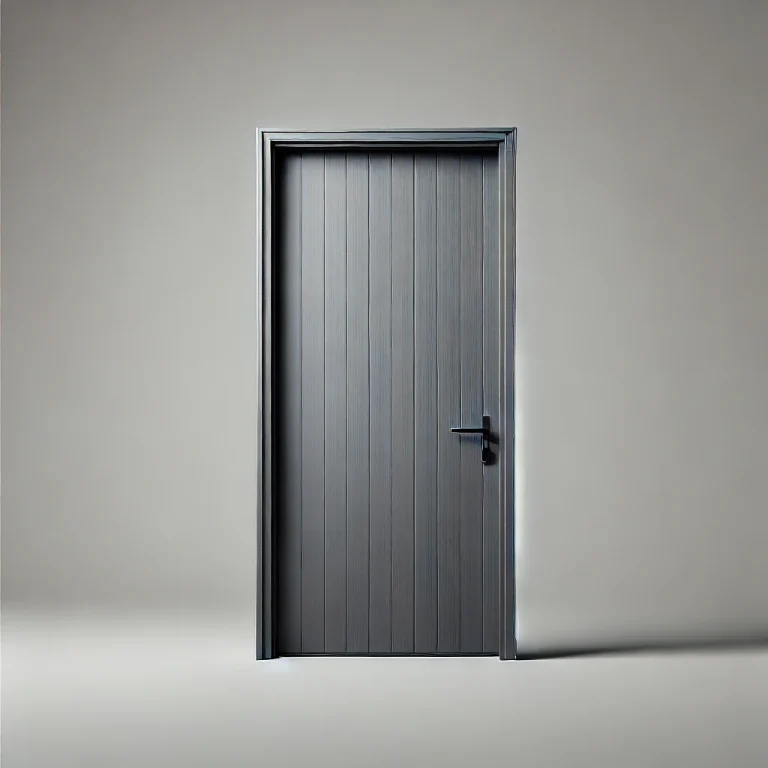
| Pros | Cons |
|---|---|
| Resistant to warping, cracking, and rotting | Higher upfront cost |
| Energy-efficient with excellent insulation | Limited design customization compared to wood |
| Low maintenance | Can be difficult to repair if damaged |
Storm Doors
Storm doors are secondary doors installed in front of an exterior door to provide additional protection against harsh weather conditions. They serve as a barrier to rain, snow, and wind while improving insulation and energy efficiency. Many storm doors feature interchangeable glass and screen panels, allowing homeowners to adjust for ventilation during warmer months.
Best For:
- Homes in regions with extreme weather, providing additional protection for exterior doors
- Improving energy efficiency by adding an extra insulating layer
- Homeowners looking for a flexible option that allows seasonal ventilation
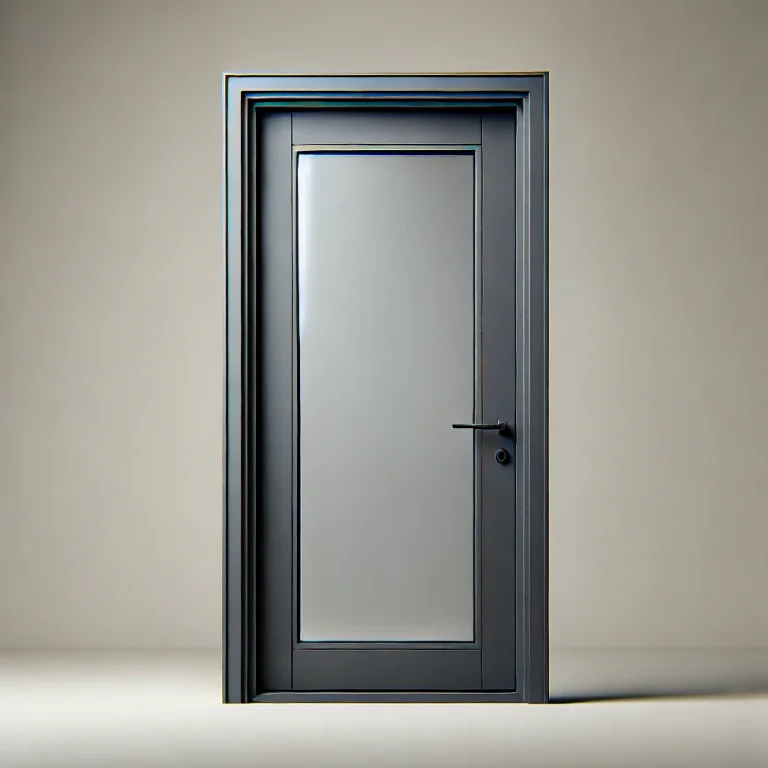
| Pros | Cons |
|---|---|
| Protects main door from weather damage | Can alter the look of entryway |
| Enhances insulation and energy efficiency | Requires additional installation |
| Allows for ventilation with screen panels | Not as sturdy as primary exterior doors |
Glazed Doors
Glazed doors incorporate glass panels within their structure, enhancing both aesthetics and natural lighting. They can be fully or partially glazed, providing a balance between privacy and openness. These doors are often used in contemporary and modern home designs, offering a sleek and elegant appearance.
Best For:
- Homes seeking enhanced natural lighting and a modern aesthetic
- Interior doors or office spaces where transparency is desired
- Homeowners who prefer decorative or frosted glass for added privacy
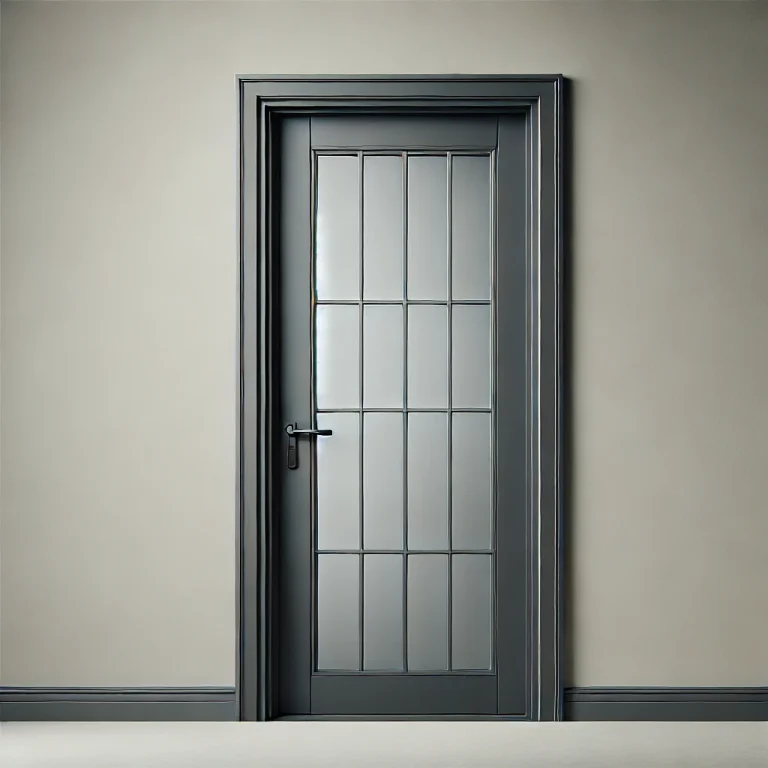
| Pros | Cons |
|---|---|
| Increases natural light in a space | Requires frequent glass cleaning |
| Enhances modern and elegant aesthetics | Less privacy depending on glazing |
| Can be customized with different glass types | More vulnerable to breakage |
Interior Doors
Pocket Doors
Pocket doors slide into a concealed wall cavity, making them an excellent space-saving solution for areas where a traditional swinging door would be impractical. These doors are ideal for small bathrooms, closets, or rooms where maximizing floor space is essential. Available in various styles and finishes, pocket doors create a seamless, modern look when closed.
Best For:
- Small spaces such as bathrooms, closets, or pantries
- Minimalist or modern home designs
- Homeowners looking to maximize usable floor space
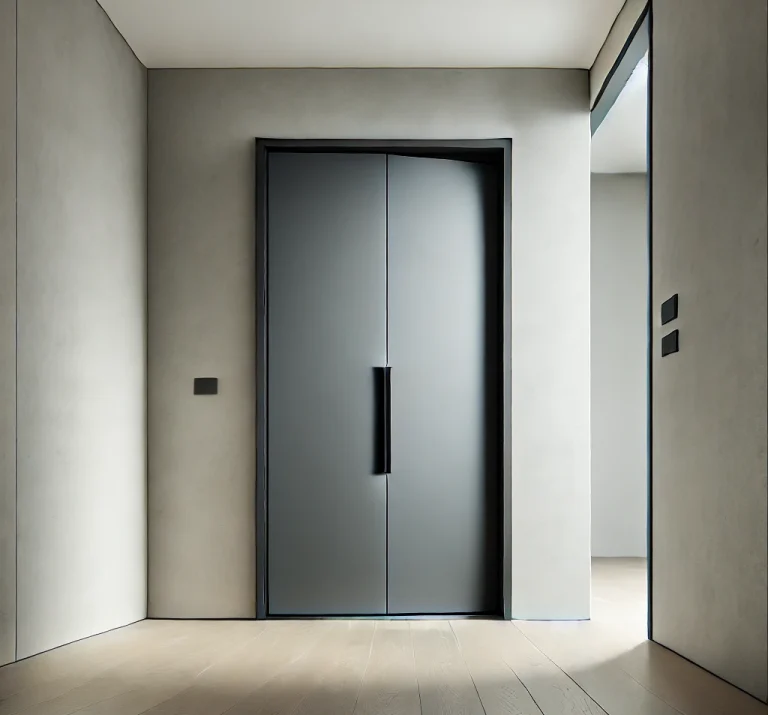
| Pros | Cons |
|---|---|
| Saves space in small areas | Requires complex installation |
| Creates a seamless, modern look | Harder to repair if issues arise |
| Available in various styles and finishes | Limited sound insulation |
Barn Doors
Barn doors slide along an overhead track, adding a stylish, rustic touch to interiors. Originally used in agricultural settings, they have become a popular design choice for contemporary homes, often used as room dividers, pantry doors, or closet covers. Barn doors are easy to install and operate, making them a functional yet decorative addition.
Best For:
- Rustic, farmhouse-style, or industrial-inspired interiors
- Open-concept spaces that need a decorative yet functional door
- Homeowners looking for an easy-to-install alternative to hinged doors
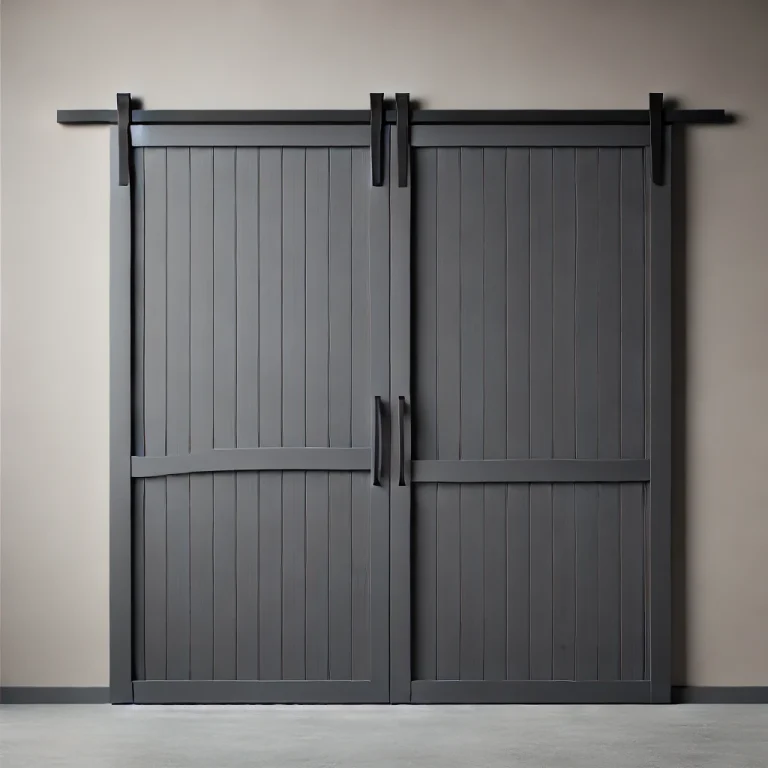
| Pros | Cons |
|---|---|
| Stylish and trendy appearance | Less soundproof than traditional doors |
| Easy to install and operate | Requires sufficient wall space for sliding |
| Works well for large openings | May not provide complete privacy |
Accordion Doors
Accordion doors are lightweight, folding doors that collapse like an accordion when opened. They are commonly used for closets, room dividers, or temporary partitions, making them a practical choice for compact spaces. These doors are affordable and available in various materials, from plastic to wood veneer.
Best For:
- Closets, laundry rooms, or small storage areas
- Temporary room dividers in office or commercial settings
- Budget-conscious homeowners looking for a space-saving solution
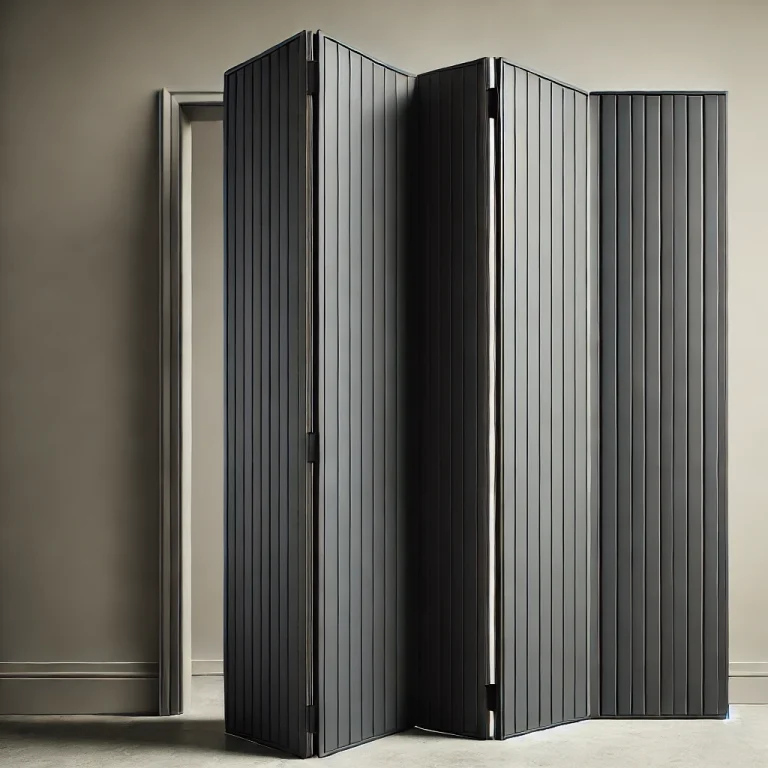
| Pros | Cons |
|---|---|
| Space-saving and easy to install | Less durable than solid doors |
| Affordable and available in various materials | Limited sound insulation |
| Ideal for closets or temporary dividers | Can look less sophisticated |
Saloon Doors
Saloon doors, also known as café doors, are short, swinging doors typically found in kitchens, bars, or entryways where partial separation is needed. They provide a vintage, Western-inspired charm while allowing easy access in both directions. Unlike traditional doors, they do not have a full-length design, meaning they offer little privacy and minimal sound insulation.
Best For:
- Kitchens, home bars, or café-style entrances
- Decorative interior doorways where full closure is not required
- Homeowners looking for an easy-to-install, lightweight door option
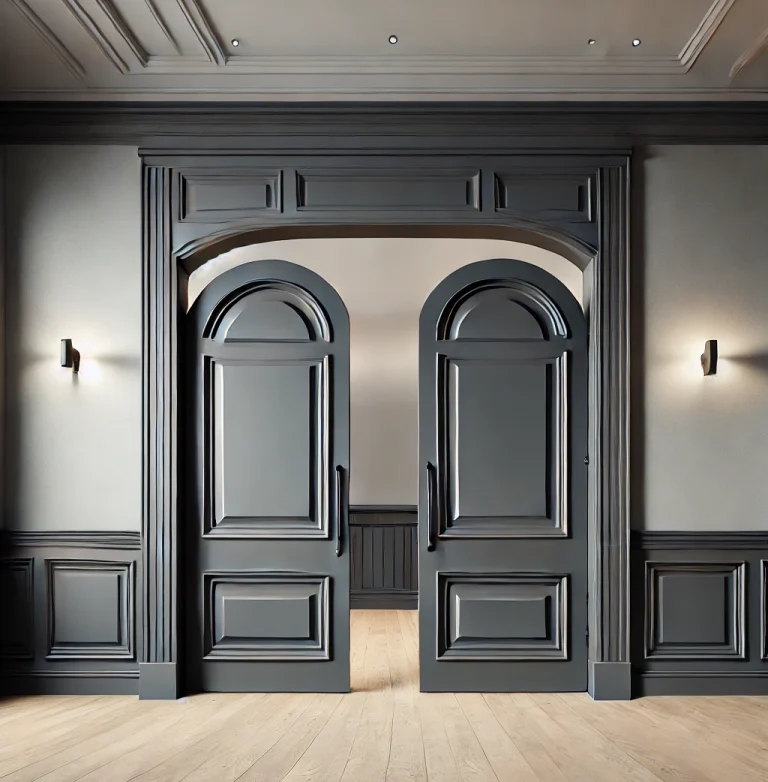
| Pros | Cons |
|---|---|
| Adds a unique, vintage charm | Offers little privacy |
| Allows for easy access in both directions | Not soundproof |
| Lightweight and easy to install | Limited design options |
Factors to Consider When Choosing Doors
Exterior Doors
When choosing an exterior door, consider the following key factors:
- Security: Opt for durable materials like steel, fiberglass, or solid wood for better protection. Reinforced locks and multi-point locking systems can enhance security.
- Weather Resistance: Ensure the door can withstand harsh weather conditions such as rain, snow, and strong winds. Fiberglass and metal doors are highly weather-resistant.
- Energy Efficiency: A well-insulated door can reduce energy costs by maintaining indoor temperatures. Look for doors with proper sealing and thermal insulation.
- Natural Light vs. Privacy: Glass-paneled doors, such as French or sliding doors, allow more light inside but may require additional privacy measures like frosted or tinted glass.
- Aesthetic Appeal: The door should complement the home’s architectural style—traditional homes may suit panel doors, while modern homes often feature sleek flush or pivot doors.
Interior Doors
Interior doors should balance functionality, space efficiency, and design. Consider these factors:
- Space Efficiency: For smaller rooms or compact areas, pocket doors and sliding doors save space compared to traditional swinging doors.
- Privacy and Soundproofing: Bedrooms, bathrooms, and offices benefit from solid-core doors, which provide better noise insulation than hollow-core doors.
- Design and Aesthetics: Match the door style to your home’s interior theme—barn doors for a rustic look, French doors for elegance, or flush doors for modern minimalism.
- Ease of Maintenance: Some materials, like wood, require more upkeep, whereas laminate or MDF doors are low-maintenance and easy to clean.
- Functionality: Consider how often the door will be used and if features like glass panels, ventilation slats, or double doors are necessary.
By weighing these factors, you can choose doors that enhance your home’s security, comfort, and overall design
Interior Doors
| Feature | Pocket Door | Barn Door | Accordion Door | Saloon Door | Pivot Door | Metal Door | Fiberglass Door | Storm Door | Glazed Door |
|---|---|---|---|---|---|---|---|---|---|
| Space Efficiency | High | Medium | High | Medium | Low | High | High | High | Medium |
| Best Suited For | Small spaces | Rustic & modern homes | Room dividers & closets | Cafes, kitchens | Grand entrances | High-security areas | All-weather durability | Weather protection | Homes needing natural light |
| Privacy Level | High | Medium | Low | Low | Medium | Very High | High | Medium | Low |
| Noise Reduction | Medium | Medium | Low | Very Low | Medium | Very High | High | Medium | Low |
| Natural Light | None | None | None | Medium | Medium | None | Medium | Medium | High |
| Maintenance | Medium | High | Low | Low | High | Low | Low | Medium | High |
| Installation Complexity | High | Medium | Easy | Easy | High | Medium | Medium | Medium | High |
Interior Doors
| Feature | Pocket Door | Barn Door | Accordion Door | Saloon Door | Bi-Fold Door | Flush Door | Panel Door | French Door |
|---|---|---|---|---|---|---|---|---|
| Space Efficiency | High | Medium | High | Medium | High | High | Low | Medium |
| Best Suited For | Small spaces | Rustic & modern homes | Room dividers & closets | Cafes, kitchens | Closets & pantries | Minimalist interiors | Classic interiors | Elegant spaces |
| Privacy Level | High | Medium | Low | Low | Medium | High | High | Low |
| Noise Reduction | Medium | Medium | Low | Very Low | Low | Low | High | Low |
| Natural Light | None | None | None | Medium | None | None | None | High |
| Maintenance | Medium | High | Low | Low | Medium | Low | Low | High |
| Installation Complexity | High | Medium | Easy | Easy | Medium | Easy | Easy | Medium |
Conclusion
Choosing the right door depends on functionality, aesthetics, and budget. Exterior doors should prioritize security and insulation, while interior doors should maximize space efficiency and complement the home’s design. Whether you prefer classic panel doors, modern pocket doors, or statement barn doors, this guide provides the knowledge to make an informed decision.
